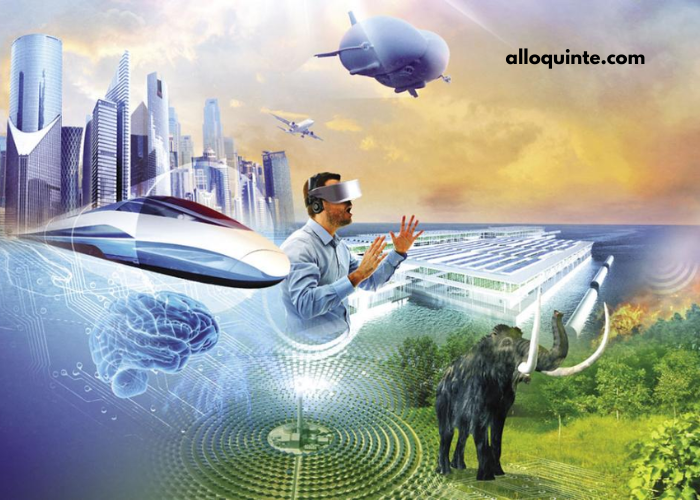In the ever-evolving landscape of technology, innovation is the driving force that propels us forward into the future. With each passing year, we witness the unveiling of groundbreaking advancements that reshape the way we live, work, and interact with the world around us. As we delve into the realm of tech innovations, we find ourselves on the brink of a future filled with promise and possibility. In this article, we will embark on a journey to explore the most exciting and transformative tech innovations on the horizon, offering a glimpse into the future of technology.
The Rise of Artificial Intelligence
Artificial Intelligence (AI) has been a buzzword in the tech world for several years, but its potential is only beginning to be fully realized. Recent advancements in machine learning, neural networks, and natural language processing have propelled AI into almost every facet of our lives. From chatbots and virtual assistants like Siri and Alexa to self-driving cars and recommendation algorithms on streaming platforms, AI is becoming an integral part of our daily experiences.
One of the most exciting aspects of AI is its ability to learn and adapt. Deep learning, a subset of machine learning, allows AI systems to improve their performance over time by analyzing data and making predictions or decisions based on that data. This capability has led to significant breakthroughs in fields such as healthcare, where AI can assist in diagnosing diseases and predicting patient outcomes.
In the coming years, we can expect AI to continue its rapid advancement. It will likely play a crucial role in solving complex problems, from climate modeling to drug discovery. Additionally, AI-driven automation may transform industries, revolutionizing the way we work and opening up new possibilities for creativity and innovation.
Quantum Computing: Unlocking New Horizons
Quantum computing is poised to revolutionize the world of computing as we know it. Traditional computers rely on bits, which can represent either a 0 or a 1. Quantum computers, on the other hand, use quantum bits or qubits, which can exist in multiple states simultaneously, thanks to the principles of superposition and entanglement.
This fundamental difference in computing power has the potential to solve problems that are currently beyond the reach of classical computers. For example, quantum computers could revolutionize cryptography by breaking existing encryption methods or provide new ways to optimize complex systems, such as supply chains and financial markets.
Companies like IBM, Google, and startups like Rigetti are actively working on quantum hardware and algorithms. While quantum computers are still in their infancy, the rapid progress in this field suggests that we may see practical applications emerge in the near future.
The Internet of Things (IoT): Connecting Everything
The Internet of Things, or IoT, is the concept of connecting everyday objects and devices to the internet, allowing them to collect and exchange data. While IoT has been around for a while, its potential is far from exhausted. In fact, we are just scratching the surface of what IoT can achieve.
IoT has already made significant inroads into our homes with smart thermostats, connected appliances, and security systems. In agriculture, IoT sensors are helping farmers monitor crop conditions and optimize irrigation. In healthcare, wearable devices are tracking our vital signs and providing valuable health data.
As IoT technology continues to advance, we can expect to see even more interconnected devices, further blurring the line between the digital and physical worlds. Smart cities, for instance, will leverage IoT to improve transportation, energy efficiency, and public safety. The industrial sector will benefit from predictive maintenance and real-time monitoring of machinery, reducing downtime and increasing productivity.
However, with these advancements come important considerations about data security and privacy. As more devices become connected, the need for robust cybersecurity measures becomes increasingly critical.
5G and Beyond: Supercharged Connectivity
The rollout of 5G networks is transforming the way we connect to the internet. With significantly faster speeds, lower latency, and the ability to handle a massive number of connected devices simultaneously, 5G promises to enable a host of new applications and services.
One of the most notable applications of 5G is in autonomous vehicles. The low latency and high bandwidth of 5G networks are essential for real-time communication between vehicles, infrastructure, and cloud-based services, making autonomous driving safer and more efficient.
In healthcare, remote surgeries and telemedicine will become more accessible with 5G, allowing doctors to perform procedures and consultations from a distance with minimal lag. The entertainment industry will benefit from enhanced streaming quality and immersive experiences in virtual and augmented reality.
But 5G is just the beginning. Researchers are already working on 6G, which is expected to provide even faster speeds and more reliable connectivity. These advancements will continue to reshape industries and our daily lives in ways we can only imagine.
Biotechnology: Health and Beyond
Advancements in biotechnology are ushering in a new era of healthcare and beyond. Gene editing technologies like CRISPR-Cas9 have the potential to treat genetic diseases by editing DNA. In the future, we may see gene therapies that can cure previously incurable conditions.
Personalized medicine, another exciting development in biotechnology, tailors treatments to an individual’s genetic makeup, increasing effectiveness and reducing side effects. This approach has the potential to revolutionize the way we treat diseases, from cancer to mental health disorders.
Biotechnology is also making strides in sustainable agriculture, producing genetically modified crops that are more resistant to pests and drought, potentially addressing food security challenges.
However, with these advancements come ethical and regulatory challenges. The power to edit genes and manipulate life at the molecular level raises important questions about safety, consent, and equity. Striking the right balance between scientific progress and ethical considerations will be crucial in the coming years.
Clean Energy and Sustainability
The urgent need to address climate change is driving innovation in clean energy technologies. Solar and wind energy continue to become more efficient and cost-effective, making renewable energy sources a viable alternative to fossil fuels.
Battery technology is another critical component of the clean energy transition. Advances in energy storage are essential for storing electricity generated by renewable sources and providing a consistent power supply. Companies are developing next-generation batteries with higher energy density and faster charging capabilities.
Beyond clean energy, sustainability is becoming a guiding principle in tech innovation. Circular economy initiatives aim to reduce waste by designing products with longevity and recyclability in mind. The development of biodegradable materials and the reduction of electronic waste are also top priorities.
Smart grids, which use digital technology to optimize the distribution and consumption of electricity, are helping reduce energy waste and lower carbon emissions. Additionally, innovations in carbon capture and utilization are exploring ways to remove and repurpose carbon dioxide from the atmosphere.
Robotics and Automation: Changing the Nature of Work
Robots and automation have already transformed industries such as manufacturing and logistics. However, we are now witnessing a broader shift towards automation in various sectors, including healthcare, retail, and agriculture.
In healthcare, robots are being used for tasks like surgery, medication dispensing, and patient care. In retail, automation technologies are streamlining supply chains and enhancing the customer experience. In agriculture, autonomous tractors and drones are improving efficiency and reducing the need for manual labor.
The rise of automation raises important questions about the future of work. While automation can increase productivity and reduce costs, it also has the potential to displace human workers in certain industries. As a result, there is growing interest in reskilling and upskilling the workforce to prepare for the jobs of the future.




